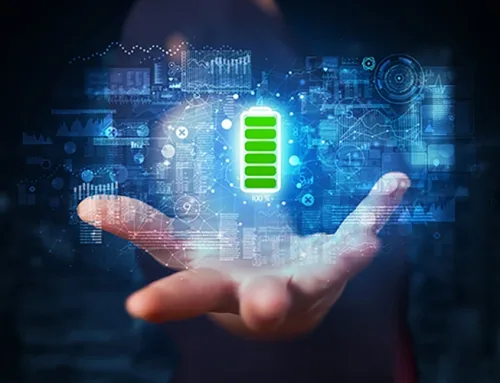It’s the start of a new week, we’ve got Guns ‘n’ Roses blazing and it’s about time we delivered you another treasure trove of information gold.
We’ve covered the best, how long they last and what you need to do to choose the right one. But ermm, what actually is an 18650 battery?
Let’s take a look.
An 18650 battery is a rechargeable lithium-ion battery. They tend to have a nominal voltage of 3.6V and range in capacity from 1800mAh to 3600mAh.
In all honesty, the name of the 18650 isn’t particularly inventive. The 18 is for the 18mm width of the battery and the 65mm is for the length. Not exactly super-imaginative right!? It is what it is.
Anyway, what these cells lack in a cool name, they more than make up for in their power and application. They are used in anything from flashlights and power tools to vapes, cameras and laptops. 18650 batteries have even been used by Tesla in their Model S & X cars since 2013. According to Evannex, their most popular battery pack contains a whopping 7,104 18650 cells in 16 444-cell modules. This equates to a huge 85kWh of energy. It’s fair to say that combined, these batteries make for an impressive piece of kit.
What is the difference between protected and unprotected 18650 batteries?
One thing you’ll notice when looking where to buy 18650 batteries is that some retailers offer protected and unprotected options. For many users purchasing for the first time, it’s a valid question and one we’ve covered in detail in our, “how do I choose the right 18650 battery?” blog.
Protected 18650 batteries basically include a small electronic circuit integrated into the cell packaging. This clever, miniature device protects the battery against overheating, overcharging and over-discharging. As a result, they’re obviously less likely to blow up and cause injury compared to their unprotected counterparts. An example of a protected 18650 battery is the BAK 18650CK.
You won’t be surprised to hear that unprotected batteries don’t have this protective electronic circuit built into their packaging. As with anything, this has its pros and cons. Whilst it means they can have more capacity and capability than a protected cell, as well as being cheaper, there are more inherent safety risks. These include overheating, short circuiting and over-charging considerably higher than they should. That is why knowing how to keep batteries safe is particularly important.
How long does it take to charge an 18650 battery?
This is one of those common questions that is given an equally common (and unfortunately, annoying) response – it depends.
Ultimately there are a number of factors to take into consideration including the brand and the battery’s capacity.
Let’s break the latter down. The capacity of a battery is determined by the milliamp level (mAh). This is used to measure electric current output. Typically, the higher the milliamps, the longer the runtime. For example, take the Molicel P28A 2800mAh and the Sinowatt 30SP 3000mAh 18650 batteries. Due to its higher capacity, in this example the Sinowatt would last slightly longer. Of course, the exact duration each battery is able to run for will depend on the products they’re used in.
18650 batteries tend to have a capacity ranging from 2300mAh to a maximum of 3500mAh (check out the Molicel M35A as an example of the top-end). However, those with a higher capacity will naturally take longer to charge.
On average, a 2600mAh battery probably takes around four hours to charge, whereas you’d be looking at five-to-six hours for a 3500mAh cell. Again, these aren’t hard facts; the battery brand, charger and output of the power source will vary.
How long does an 18650 battery last?
It all comes back to those two words again – it depends. How long an 18650 battery lasts often depends on the application it’s being used for and how energy-intensive that action is.
So while it is impossible to give you an exact figure, here are three key features that impact the duration for which you’ll be able to use an 18650 battery; age, capacity and charge cycles.
Of course, these three factors can be mitigated to some degree. Everything from how you store the batteries to the way you recharge them can have an impact on performance and duration. Check out our, “how long does an 18650 battery last” blog for a comprehensive breakdown on what you can do to boost the lifecycle of your 18650 battery.
What is the best 18650 battery?
It’s impossible to say, as there are so many established, respectable brands out there with some very high-quality products. We certainly highlighted some top performers in our, “what are the best 18650 batteries?” blog. When you’re deciding which 18650 battery to buy, there’s a few things to take into account.
Consider the brand, the capacity of the battery and whether it’s suitable for the end-application. For example, some manufacturers don’t recommend their products being used for vaping. From a health and safety point of view, it’s essential that you listen to this advice.
Also, only purchase from reputable retailers. There’s an awful lot of counterfeits out on the market that are dangerous and a safety hazard. Yes, they’re often cheaper but there’s no discount worth paying to risk your safety and wellbeing. If you’re not sure if you’ve got your hands on a dodgy 18650 battery, take a look at our guide on how to identify a fake battery. It’s better to be safe than sorry!
There you have it, now you know what an 18650 battery is. They’re marvellous bundles of energy that we rely heavily on for so many day-to-day activities. Treat them good and treat them well. They’re worth looking after.


